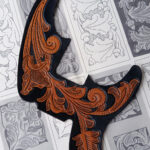By Warren Frank
The story can come across as pretty bleak if you’re not paying close attention. Consumers are caught on a tightrope between convenience and sustainability amid the ever-scrolling blue-light buzz that permeates the market in 2024. Daunting yes, but a close look at one’s own community often points to a treasure trove of sustainable artists. In Ontario’s City of Kawartha Lakes and Peterborough, shoppers can find loads of creators to help stock their cupboards, wardrobes, and minds, all the while decreasing their environmental footprint.
Creators like Nathan Truax, a leatherworker and the proprietor of Truax Leather Co., who specializes in Western-style tooling and carving, finds sustainability can be a pillar of one’s practice if production is kept close to the roots of the craft.
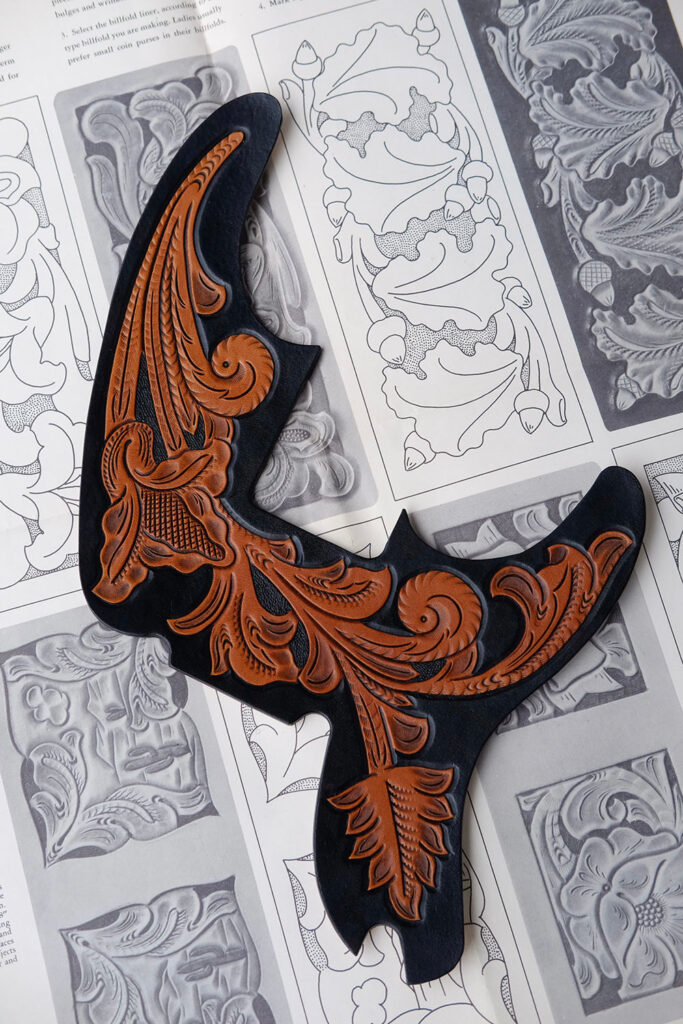
Pickguard by Truax Leather Co. 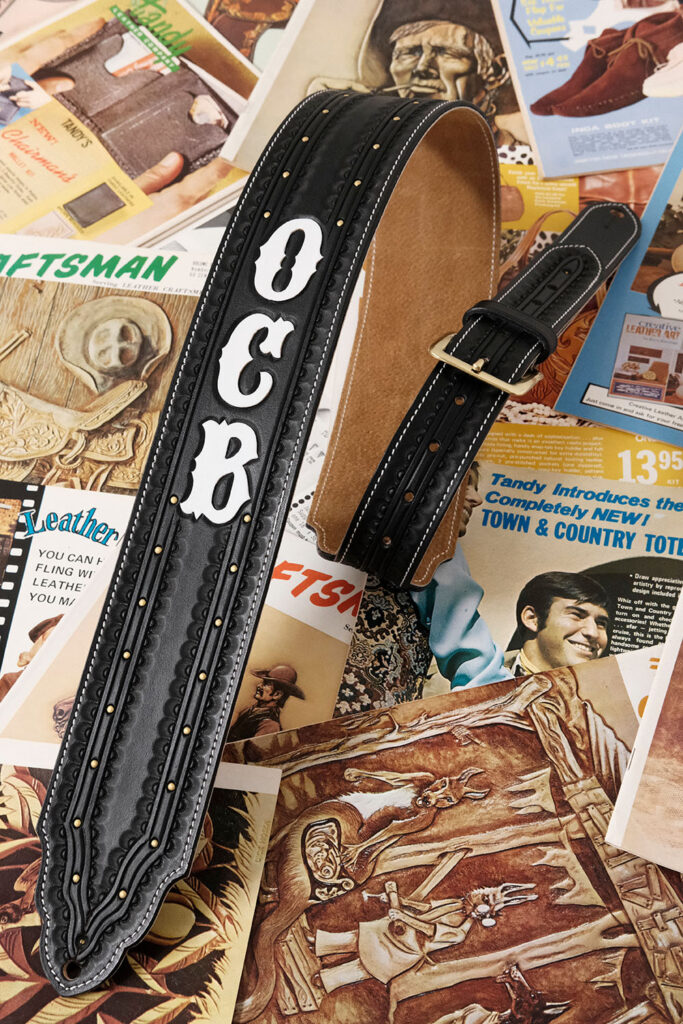
Custom guitar strap by Truax Leather Co.
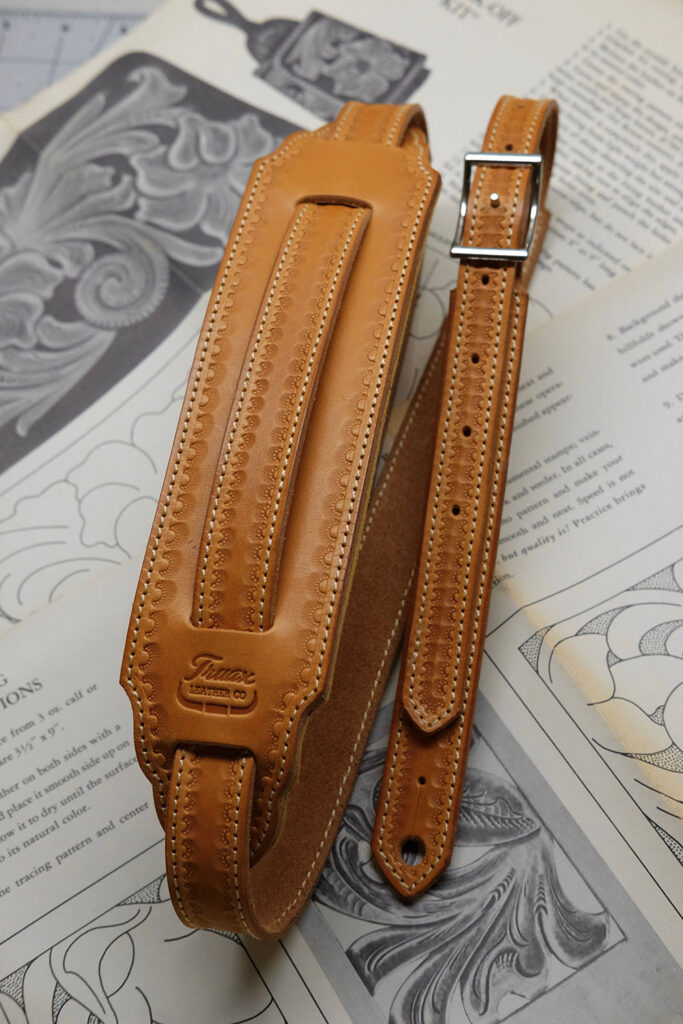
Photos courtesy of Nathan Truax
“Sustainability is built into this medium,” says Truax. “High-quality, handmade leather items significantly outlast their often plastic counterparts. Creating items that have the potential to last decades if treated right reduces the need to replace lower-quality items that wear much faster.”
Truax began analyzing the sustainability focus of his practice after “a recent experience, where my partner purchased a second-hand purse only for it to fall apart in what seemed like weeks; [it] made me rethink the power I have in creating items that can last for many years.”
Add to this the heartwarming factor that longevity can increase nostalgic sentiment and you’ve got a real bang for your buck. “Customers often mention how they love the idea that these pieces can become heirloom-like, with the ability to be passed down to the next generation,” says Truax.
Also finding sustainable strength in the classics is On Point Pottery’s Elise Karklins, whose practice incorporates a mixture of wheel-throwing, handbuilding, and casting using stoneware.
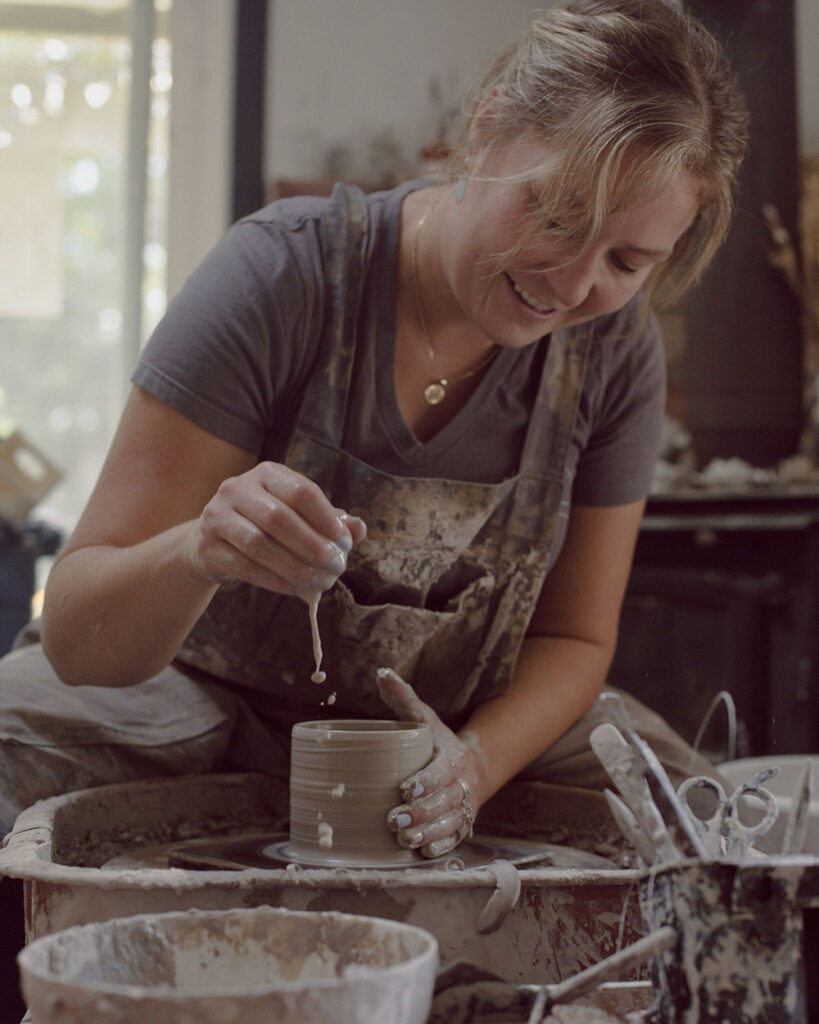
Elise Karklins of On Point Pottery in the midst of her creative process. 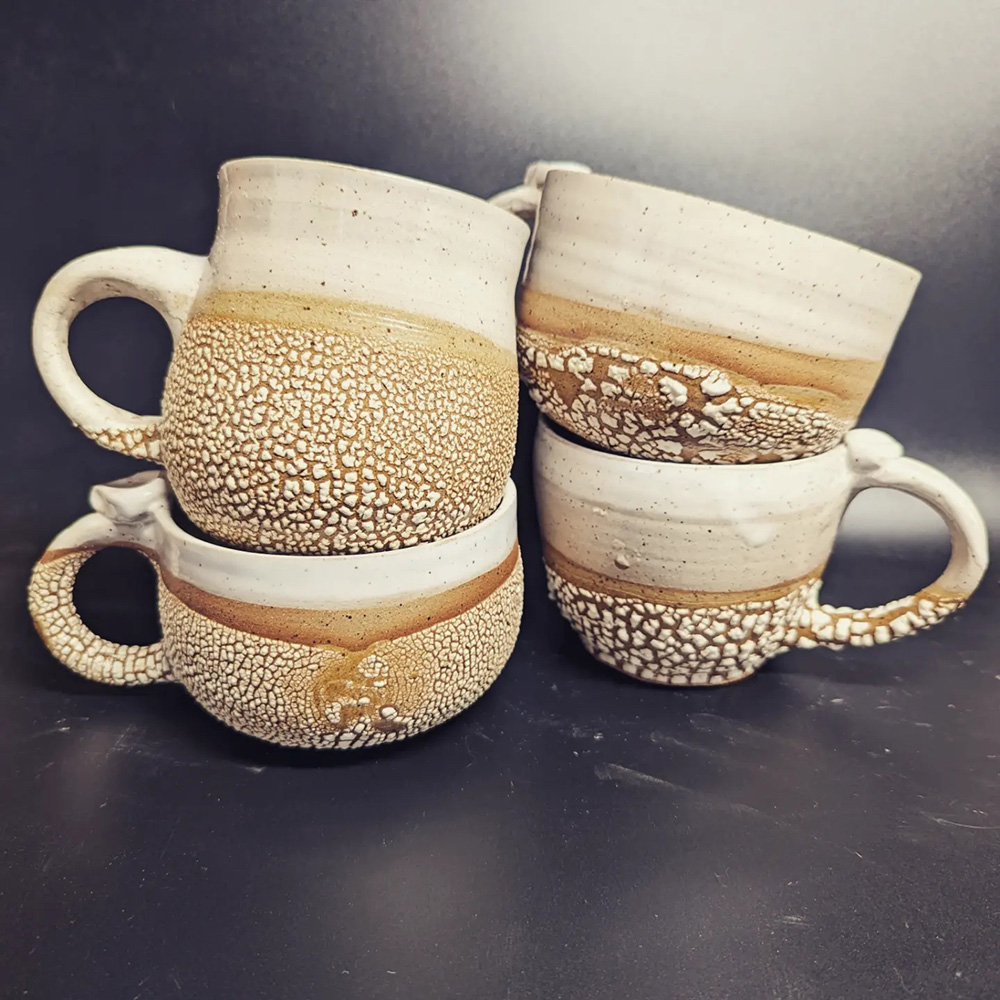
Original mugs by On Point Pottery.
Left: Courtesy of Katrina Thorne.
Right: Courtesy of Elise Karklins.
Karklins notes how pottery centres around sustainability from the ground up, stating, “ceramics are made from renewable sources like clay, which makes them sustainable before the firing process begins.” This helps consumers avoid the use of microplastics. Aside from material sustainability, Karklins reuses vintage molds for casting ceramics instead of producing new ones.
Combining agricultural practices with modern digital storytelling is Lindsay’s Kawartha Backyard Farms, helmed by E Kelly who, above all, “hopes that we can create a better world for all Earthlings.”
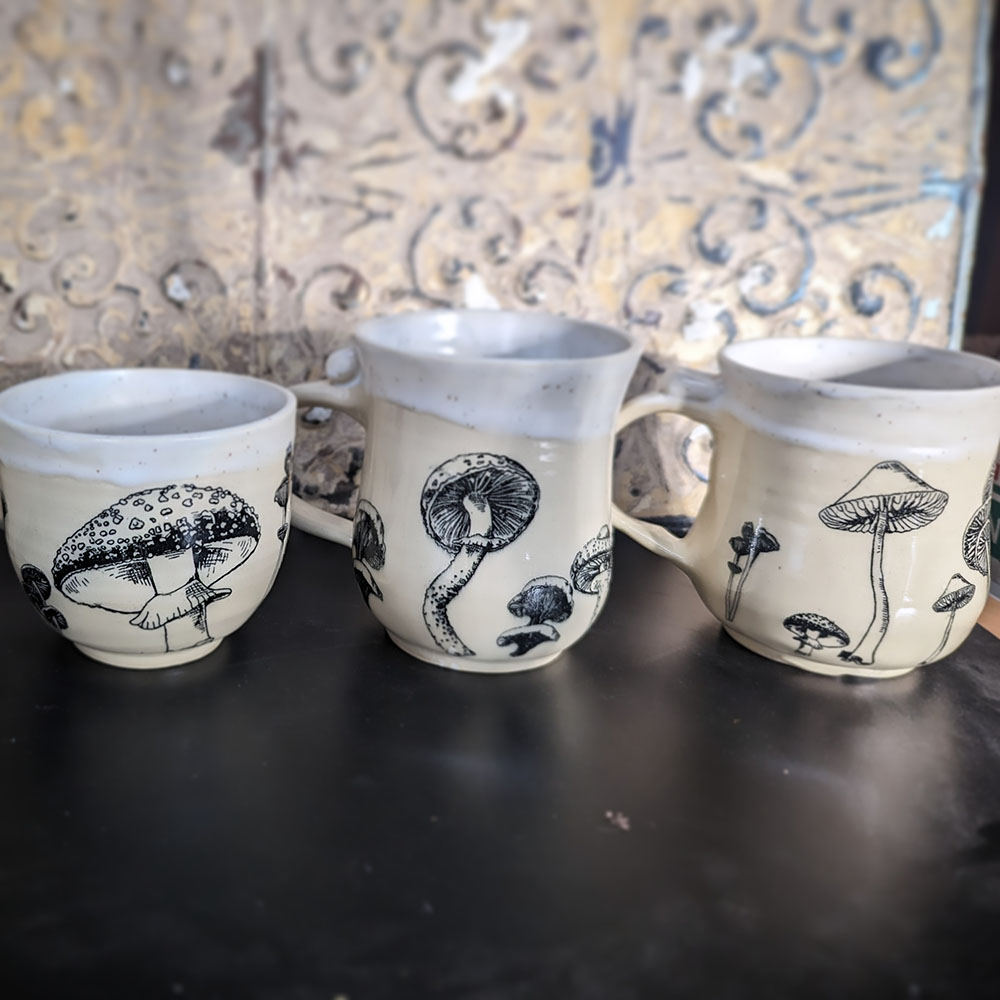
Original mugs by On Point Pottery. 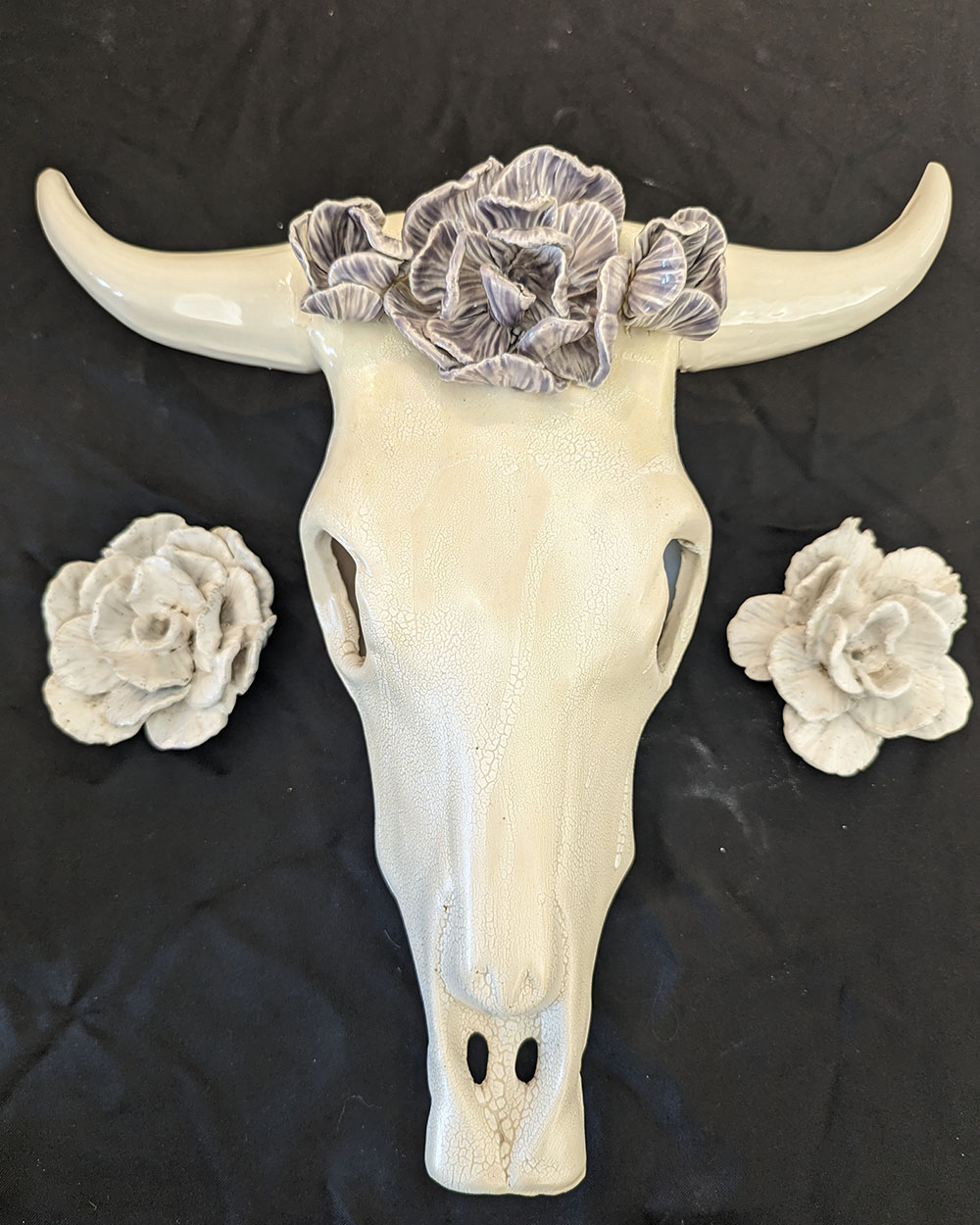
A ceramic mold-cast by On Point Pottery.
Photos courtesy of Elise Karklins
Kawartha Backyard Farms is a community food security project that is focused on the process of growing food within living spaces. They aim to “blend the art of gardening with the science of food production while also sneaking in some health promotion as well.” Kelly encourages consumers by saying that “just growing food at home is a great way to promote financial sustainability as the overall cost to produce food is drastically lower than the cost of the same produce at grocery stores.”
The practices of these folks only begin to scratch the surface of what is available for those willing to listen, search, and learn. Community creators are out there and they are making an impact. By showing them support, you can make one too.
